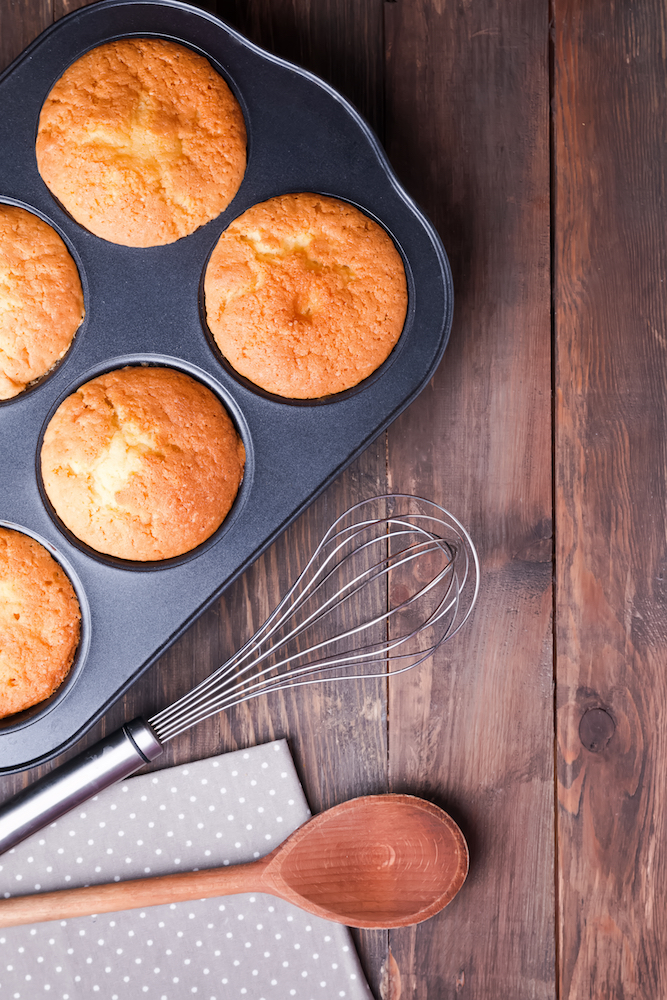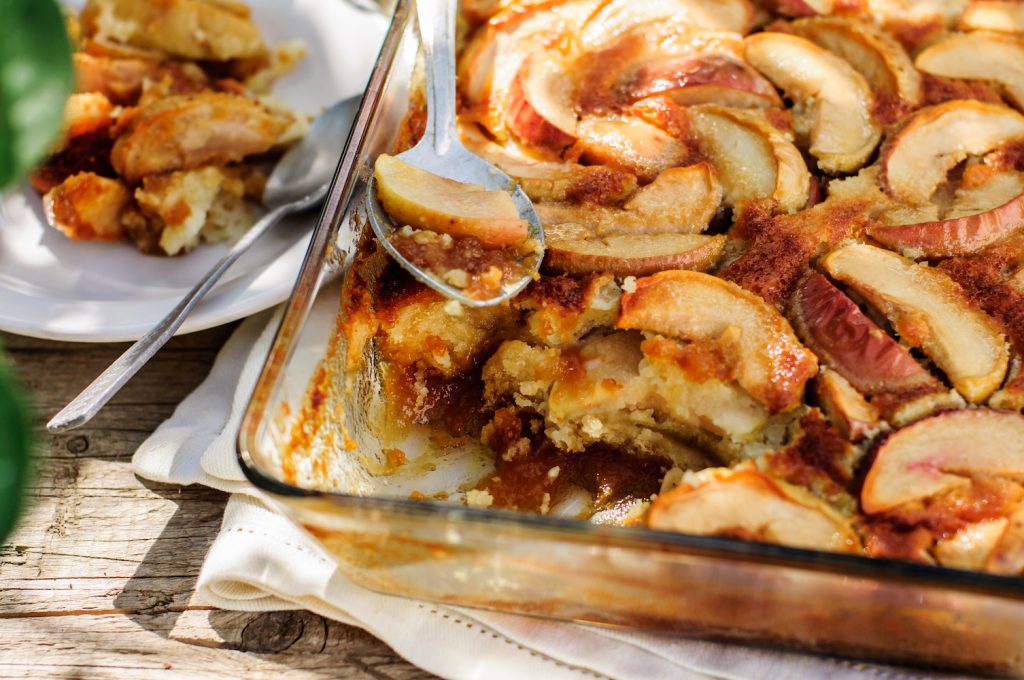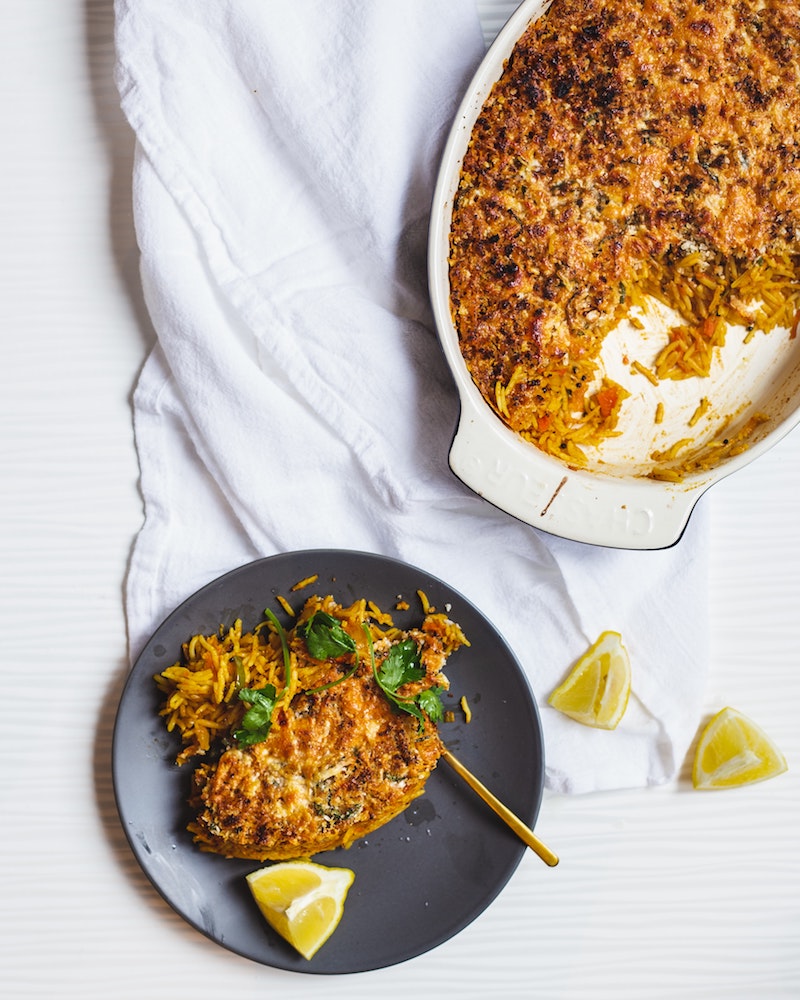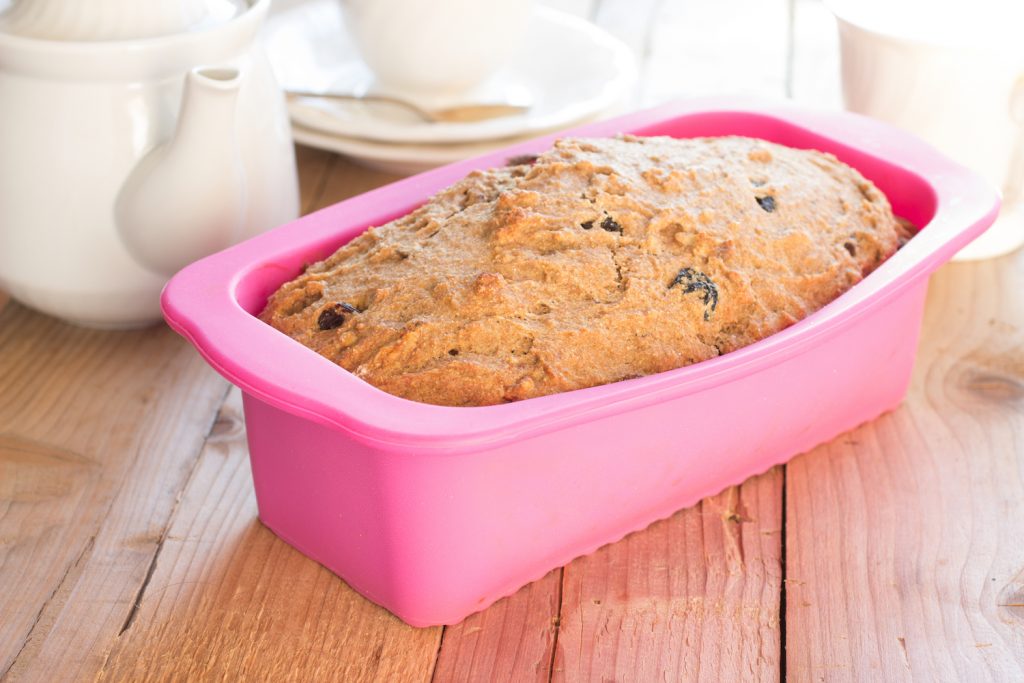About a month ago, one of my metal cake tins got scratched up and ended up rusting irreparably. Rest in peace, old friend.
Since I couldn’t use a rusty old pan anymore, I was in the market for a new one!
As it turns out, if you’re looking to get new cookware or replace your cookware, there’s a lot of options out there. There’s cheap ones from Target and Amazon and expensive ones from Williams Sonoma and Le Creuset.
There’s all different sizes and shapes, from round ones to ones shaped like cartoon characters.
And there’s bakeware made out of a number of different materials – metal, glass, ceramic, and silicone.
But does it really matter what material your bakeware is made of?
As it turns out – yes! Let’s cover all of your options so you’ll know what to go with if you need new bakeware.
Metal

Metal bakeware is an all-around great, versatile option for anything you might want to bake.
And if you want your cake to have a shape other than a circle or a rectangle, metal is one of the best ways to go. Metal pans come in tons of shapes, from fancy bundt tins to pans shaped like numbers or animals. While maybe not the way to go for everyday cakes, shaped cakes are a fun way to add some visual interest to your desserts.
Metal bakeware has the biggest range of materials, from aluminum to stainless steel to non-stick, so you may need to do some research to figure out what works best for your needs. (A post on this is coming soon!)
Cost
Metal bakeware is affordable. As one example, a single cake pans averages from $10 to $25 USD, depending on brand and quality.
More complex bakeware, such as bundt cake pans and springform pans, tend to cost $20 to $35 USD.
Durability
Metal bakeware is a durable option that can last you for years if you treat it with care. As mentioned previously, metal can scratch and discolor, so it’s best to clean it by hand. Metal can also warp if it’s exposed to extreme temperature differences (such as washing it under cold water right after it comes out of the oven).
I’ve had metal bakeware that’s lasted me for years though, so with gentle treatment, it’s a great investment.
Heat conduction
Metal pans are great at conducting heat – which is what helps gives your bakes color and texture. Darker-colored bakeware is going to get warmer than lighter-colored, so keep that in mind if you have an especially delicate bake that you don’t want to get overly brown.
How to keep it clean
For the most part, it’s best to hand-wash metal bakeware and leave it out to dry before putting it away. Certain types of metal can discolor, rust, or oxidize, depending on how you wash and treat it.
As well, a lot of metal bakeware can deteriorate over time when put in the dishwasher. Aluminum, for example, is vulnerable to scratching. And nonstick pans can lose their coating after too many trips through the dishwasher.
What is best to bake in it?
Metal of any variety is best for cooking cakes, cupcakes, muffins, and loaves.
Glass

Sturdy and versatile, glass bakeware will last you years if you get something of good quality (such as Pyrex). Glass is also a versatile option, as it doesn’t hold onto flavors and smells. This means you can bake both sweet and savory foods in it.
Cost
Glass bakeware ranges from around $20 to $50 USD for a set, depending on quality.
Durability
A good-quality glass bakeware should last you a very long time. We’ve had our set for years, and they’re still in excellent condition.
It’s important to note that cheaper glass bakeware may crack or chip on the edges. That’s why it’s worth it to go with trusted brands rather than the cheapest product on Amazon. You get what you pay for, after all.
Heat conduction
While glass doesn’t conduct heat quite as well as metal does, it will still give your baked goods a nice golden-brown finish. Glass also retains its heat for a long time, making it a great option for bakes like pies and casseroles, where you want them to be served warm.
How to keep it clean
Glass can be hand-washed or put in the dishwasher – though as with everything you stick in the dishwasher, double-check to make sure your bakeware is dishwasher-safe! It’s easy to soak and scrub glass, since you don’t have to worry about scratching it.
What is best to bake in it?
Glass bakeware works best for bakes you want to get crispy or keep warm as you serve it, such as pies, crumbles, casseroles, or baked pasta dishes.
Stoneware

Stoneware is made from clay or other naturally-found materials. Like pottery, it’s baked in a kiln and glazed to give it a nice finish.
The thing that makes stoneware stand out from other bakeware options is that it looks fancy as heck. They come in a variety of colors and give you that elegant feel. Some stoneware dishes out there look like actual works of art.
So if you’re a food blogger, or someone who wants to take very nice-looking photos of your food, or even just someone who wants to feel fancy every time you bake, stoneware dishes are worth it.
You can’t see through stoneware, though, which may be one downside if you like to look at your bakes to know if they’re done.
Cost
Stoneware is the most expensive option on this list, ranging from $30 to even $100 USD for a good-quality baking dish. A lot of upper-end brands like Le Creuset specialize in stoneware. Like with glass, you tend to get what you pay for.
Durability
Stoneware is a very durable material. However, be careful that you’re purchasing good-quality products and not just the cheapest thing off of Amazon. A quality brand will glaze its bakeware so that it will be resistant to chips and cracks. Since stoneware is expensive, you’ll want it to last you for years.
Heat conduction
Functionally, stoneware isn’t much different from glass. It gets hot, though not quite as hot as metal. It also heats evenly, allowing you to bake things to a nice golden-brown color. It also stays warm, perfect for meals and desserts that are tempting enough to go back for seconds.
How to keep it clean
Always let stoneware cool before hand-washing it. Any stuck-on food can be scrubbed away with a nylon brush. Stoneware can stain and discolor over time, but that doesn’t affect the flavor of your food.
Depending on your brand of stoneware, you may not need to use dish soap (similar to cast iron, some brands become seasoned over time and develop a non-stick surface!). Be sure to do research before you clean your new bakeware.
What is best to bake in it?
Like with glass cookware, stoneware works well for pies, pastry, crumbles, and savory dishes like casseroles. Pizza stones, which are made of the same material, are also great for making pizza!
Silicone

The newest type of bakeware out there, silicone just looks cool. It’s squishy, fun to play with, comes in bright colors, and can be made into any shape out there.
Perhaps the biggest benefit to them is that your bakes won’t stick! You don’t even have to grease or line the pans first. Just turn them over and your bakes will pop right out. This removes one step from your baking process.
Another huge benefit is how flexible silicone is. While other pans are bulky and heavy, you can store silicone pretty much anywhere. In that respect, they’re perfect for apartment living, where you don’t always have the space to store a lot of items.
This flexibility does have a downside; silicone bakeware is wobbly. You have to be careful not to spill your batter in the oven when you’re putting a cake in the oven. Be careful if you’re especially clumsy!
Cost
An average silicone cake pan costs between $10 to 20 USD. They sometimes come in sets of pans of multiple sizes, making them even less expensive overall.
However, you’ll want to make sure that you’re getting a good-quality pan. While this is true for every piece of bakeware, no matter its material, some cheaply made silicone pans may contain chemicals that you don’t want to be ingesting. So be sure to look for “food-grade” or “medical-grade” on the label before making your purchase.
Durability
High-quality silicone is very durable if treated gently. As long as you don’t use abrasive cleaners on it, silicone can last you for years. It can also bend and fold easily, so you can store it in even tight apartment spaces.
It can also be dropped with no issue, unlike glass and ceramic, perfect for all you clumsy bakers out there!
Heat Conduction
One of the biggest downsides to silicone is that it isn’t a good heat conductor. It doesn’t get hot or retain its heat in the same way that glass or metal do; if you touch a silicone bake pan that’s been out of the oven for a few minutes, it’s not hot.
So if you’re wanting your baked goods to brown on all sides, you should choose another material to bake it. But if you’re wanting a delicate bake with little-to-no browning, silicone might be the perfect choice.
How to keep it clean
Double-check your bakeware to be sure, but most silicone is dishwasher safe. However, if you do decide to put it in the dishwasher, be sure to keep it away from any sharp objects that may damage it.
Silicone is super easy to clean however – you’ll never have to scrub on it for minutes to get stubborn food off. So it may be easier just to hand-wash, especially if you want to make sure it doesn’t get damaged.
What is best to bake in it?
Use silicone when making delicate cakes (that you don’t want to brown very much), cupcakes, muffins, and any baked goods that you don’t want to stick.

Leave a Reply
You must be logged in to post a comment.